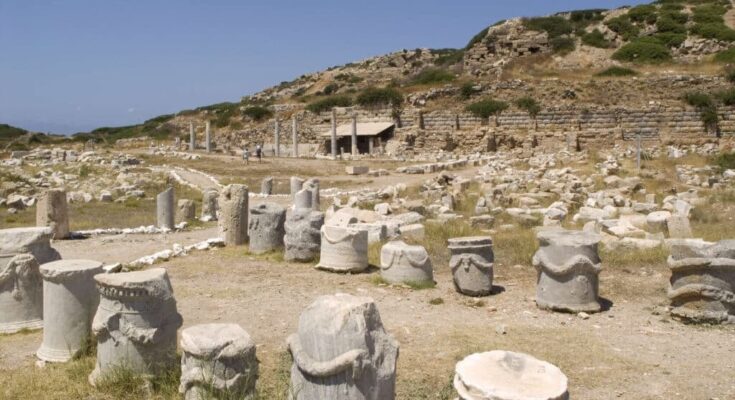
New research highlights the growing risk to major cultural heritage sites in Greece and Turkey due to rising sea levels. The study finds over half of the coastal monuments face very high or high risk, and are thus in danger of submerging.
Cultural heritage at risk: Greece and Turkey’s vulnerable sites
This concern over cultural sites is not new. Previous research by the Society for Ancient Coastlines had already identified the threat to the island of Delos. As global warming accelerates, glaciers continue to melt, leading to rising sea levels worldwide.
Some locations, such as Delos near Mykonos, have already suffered damage from severe flooding, as noted in relevant reports. The UNESCO World Heritage Site, once a significant religious sanctuary in the Greek and Roman world, has been particularly affected.
Ancient cities at risk: From Knidos and Kaunos to Elaia
Geoscientist Enes Jengin from the Department of Urban and Regional Planning at the University of Dumlupinar led this study. Using data from the US National Oceanic and Atmospheric Administration’s 2022 Sea Level Rise Technical Report, Jengin created “flood risk maps” for five different scenarios. These scenarios ranged from very high to very low risk, based on both global and local sea-level rise projections.
The study assessed the vulnerability of 464 historic sites along the Eastern Mediterranean coasts of Greece and Turkey. The results show that 147 sites, including castles and ruins, will face risk within 50 years even in the best case scenario. Out of the 464 sites, 34 are at “very high” risk, 19 “high” risk, and 27 “medium” risk.
In Turkey, the most threatened sites include the ancient cities of Knidos and Kaunos in Muğla and the port city of Elaia in İzmir. With a one-meter sea-level rise, these sites could partially or fully disappear by the century’s end. A three-meter rise would further endanger Ephesus, Miletus, Guverzinada Castle, and the ancient cities of Olympus and Patara.
In Greece, several ancient cities are also at significant risk. Experts have deemed the cities of Sissi, Pavlopetri, and Locris at “very high” risk. These locations, rich in historical and cultural heritage, face the potential risk of being lost to the sea.
Urgent call for action: preserving cultural heritage amid climate change
While these findings are alarming, there is a glimmer of hope. The study finds that 317 sites will remain safe from flooding even with a five-meter sea-level rise. However, Jengin emphasizes the urgency of protecting high-risk areas to preserve humanity’s shared cultural heritage.
“To ensure the long-term success of these efforts and to safeguard our cultural heritage, we must prioritize immediate action in high-risk areas,” Jengin urges. He further stresses the need for rapid measures to mitigate potential threats from natural disasters, human activities, and other factors that could jeopardize cultural heritage.
The study’s findings underscore the need for global awareness and proactive measures to protect these irreplaceable sites. As climate change continues to pose a serious threat, swift and effective action is essential. It is of vital importance to preserve these invaluable cultural landmarks for future generations.



